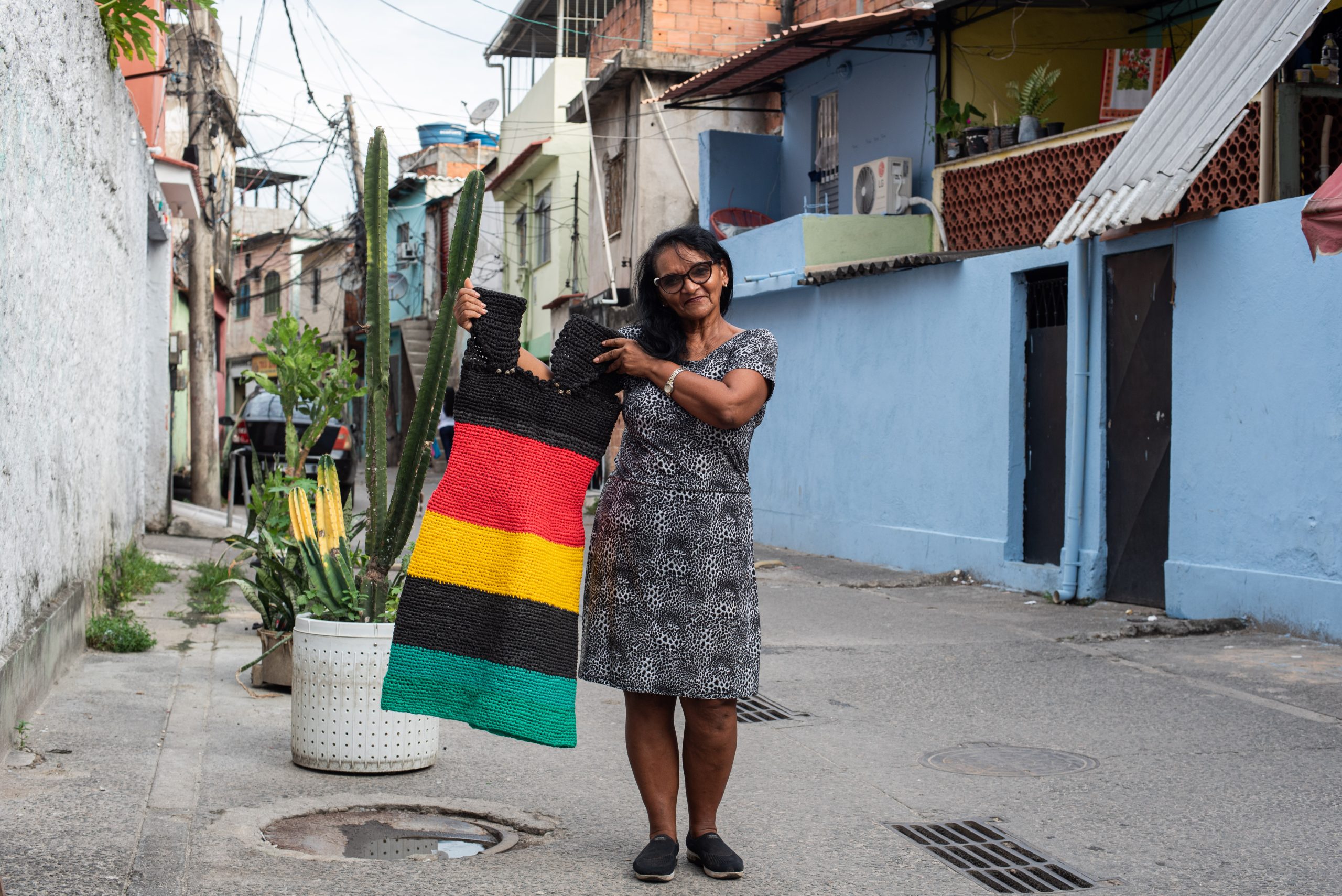
Since 2022, March 30 has been designated International Day of Zero Waste by the United Nations (UN) General Assembly. The date draws attention to the need for sustainable waste management in the face of the alarming environmental crisis brought on by the overproduction of garbage, which globally amounts to 2.3 billion tons per year and could reach 3.8 billion by 2050. In 2025, the UN is calling on the world to reflect on the social and environmental impacts of waste, with this year’s focus being the fashion industry.
With that in mind, RioOnWatch spoke with Isanete Bernardo da Silva, an artisan from Acari, a favela in Rio de Janeiro’s North Zone. She crafts clothing and other items using repurposed materials, helping to reduce excessive waste and promote sustainable fashion within her community. She proudly states that she has made it her life’s mission to “turn waste into raw materials.”
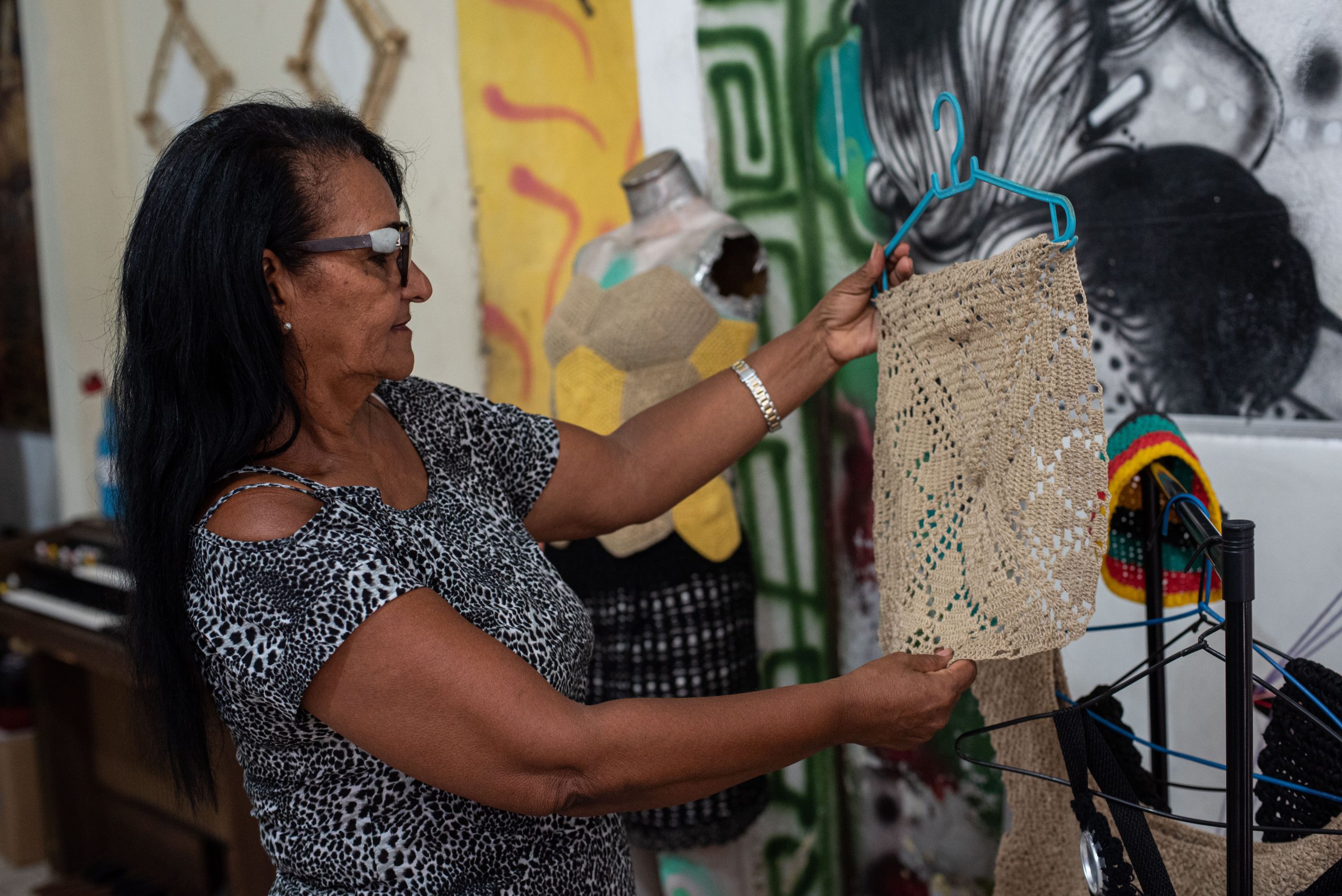
Dona Nete: A Pioneer in Sustainable Fashion
Da Silva, known to all as Nete, met us in front of the Acari Hospital. From there, we walked through the neighborhood’s streets towards Espaço Faveleira, where she showcased her latest clothing and accessory creations. Dona Nete has called Acari home since 1978. Now 67, with two decades devoted to repurposing materials, she recalls that her love for crafting began back in her school days.
“It’s been many years. [Back in school] I fell in love with handicrafts. From then on, I kept going with this type of work, until I eventually got into recycled materials. Everything I see, I try to recycle. Why? Because I find working with these materials incredibly beautiful. And it just keeps awakening you to wonderful things. You look at something and think, ‘hold on, I can transform this. I have the power to turn waste into luxury. I have that power.’ So that keeps me more and more motivated.” — Dona Nete
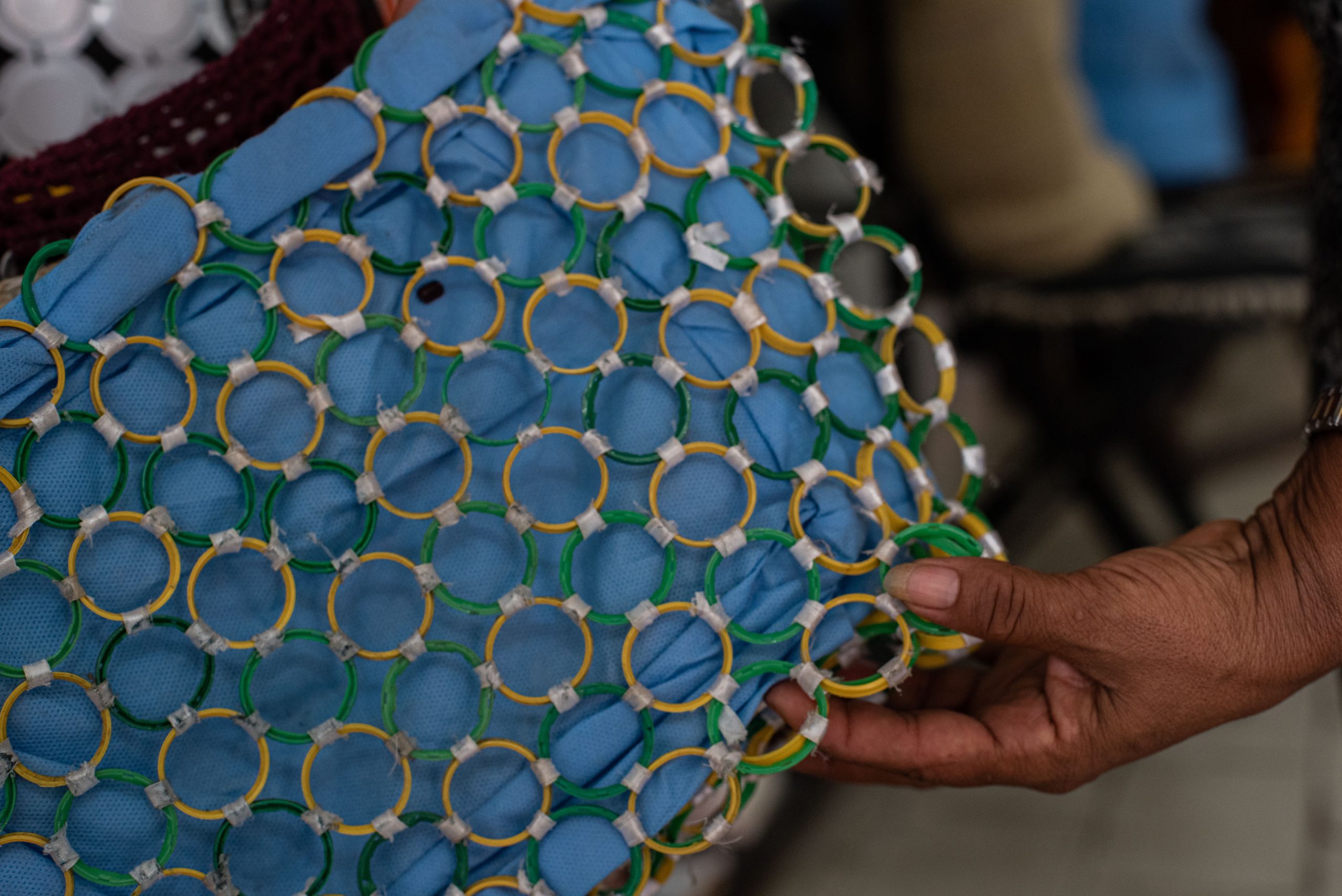
The restless nature of her creative mind is what draws her to repurpose materials. In addition to reusing discarded materials to create new pieces, Dona Nete also makes clothing and accessories from organic materials, such as dried tree leaves and seeds.
“I use all kinds of materials—from onion skins to dry guava leaves. I make flowers [with them]. Old clothes? I cut them up, transform them. Basically, I’ll use just about anything… You can make beautiful things out of toilet paper rolls. Earrings, necklaces, baskets. Truly beautiful things. So yes, I believe there are no limits. Our imagination has no limits.” — Dona Nete
Looking closely at Dona Nete’s clothes, dresses, bags, and hats, it’s easy to see the wide variety of materials she uses to create her products. While Nete collects some of these materials in Acari, she says she buys others from recyclable waste pickers who live in the community.
“The hardest part for me is getting soda or beer bottles. I don’t drink either, so I have to buy them, right? There are lots of recyclable waste pickers around here. Guaravita [a natural guaraná-based drink] cups are easier, because you can find them on any corner. All you have to do is head out with a bag and go for a walk—up and down the streets, picking up the little cups. From the body of the cup, you can make a bag. From the rim, too. You can use the whole thing.” — Dona Nete
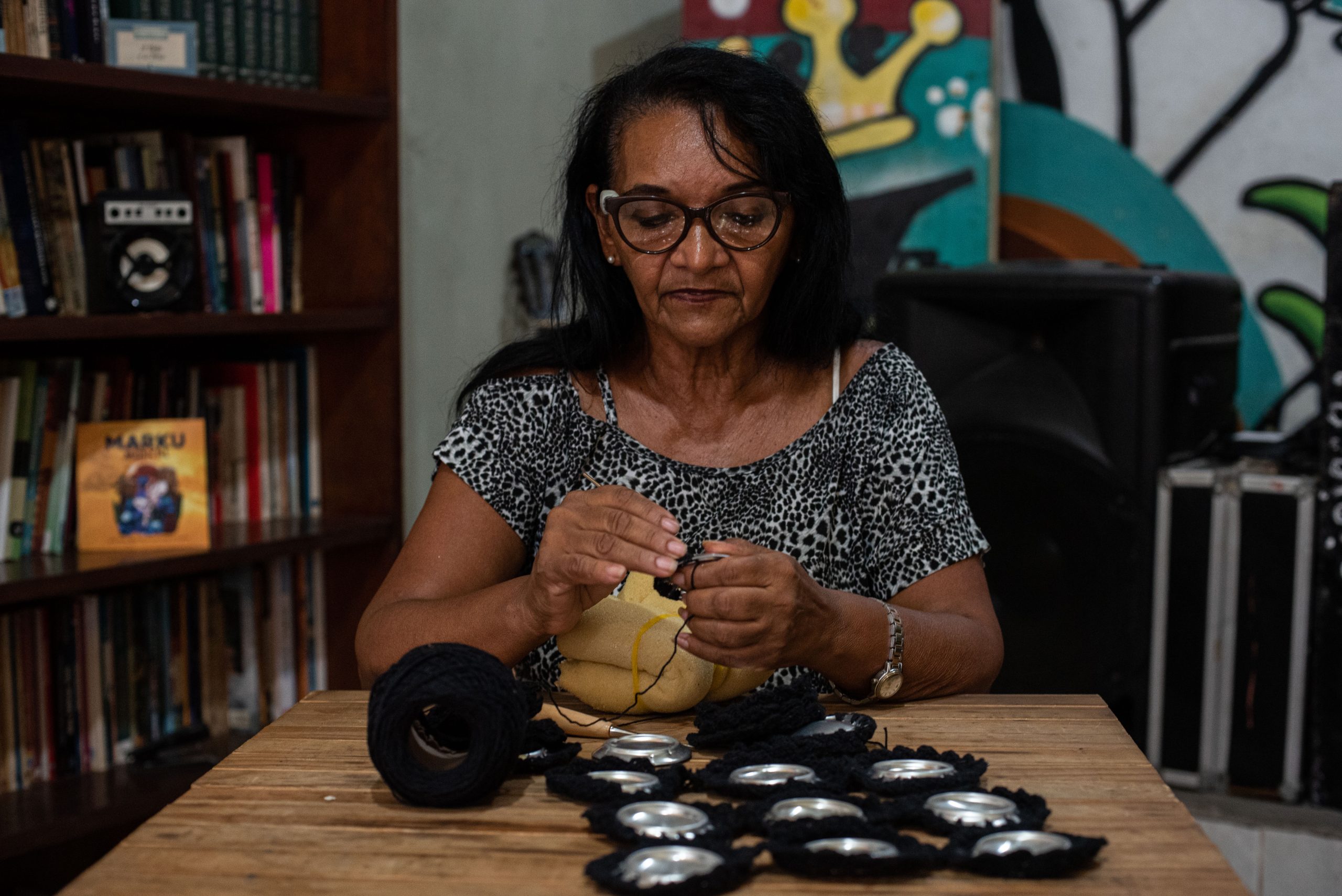
Even though the work of recyclable waste pickers helps reduce the amount of garbage resulting from inadequate disposal in Acari, Dona Nete argues that excessive consumption, along with poor public management of solid waste, is the main factor putting residents’ health and well-being at risk.
“If people consumed more natural things, there would be a lot less garbage. Everything’s packaging, packaging, packaging, isn’t it? But when it comes to recyclables, like cans and PET soda bottles, we have a lot of waste pickers around here… They collect them to sell.”— Dona Nete
Known in the community for her work, Dona Nete now relies on residents who separate their recyclables and donate them to the artisan. This support network strengthens her production and helps reduce waste in Acari.
After 20 years of handling waste with creativity and ecological awareness, Dona Nete now shares her wisdom with the community. Since 2022, every Monday, she has been teaching her neighbors her crafting techniques using repurposed materials at the Edna Valadão Family Health Clinic.
“I’m teaching now… I have an occupational therapy group. These are people who take medication… ‘black strip’ [controlled] meds to sleep, people who have depression, that kind of thing. Some of them have told me, ‘Wow, Nete… I’m in love with recycling. I had no idea it could be this fun.’ Another one came up to me and said, ‘Nete, I’m really thankful to you, because I’ve been taking less medication. Little by little, I’m starting to wean off of it.’ And you know why? Because we start to engage our minds, get them working again.” — Dona Nete

Currently, some of Dona Nete’s students are already producing and selling their own pieces made from repurposed materials. Dona Nete, however, chooses to go against the grain and refuses to sell her pieces.
“I don’t sell [anything]. Because here’s the thing: my pieces are one of a kind. I make them with the purpose of teaching. You want a dress like that one? Then you’re going to make your own. We teach people how to fish—we don’t give them the fish. That’s just how I am… Some people think a lot about money. I’m not like that. I don’t like that. I like to share what I know [with others]. So I’m going to teach you how to make things.” — Dona Nete
Dona Nete, who works in nursing and as a caregiver for the elderly, is passionate about her work with repurposed materials. In addition to teaching women how to create their own sustainable clothing pieces, the artisan encourages her students to rethink consumption and their relationship with waste.
“I wear my own things [the ones I create], believe it or not. I wear my clothes, I wear my bags. I go to church in my outfits, and the sisters come up to me and say, ‘Nete, what is that outfit?’ I’m the only one who has it. I made it myself.” — Dona Nete
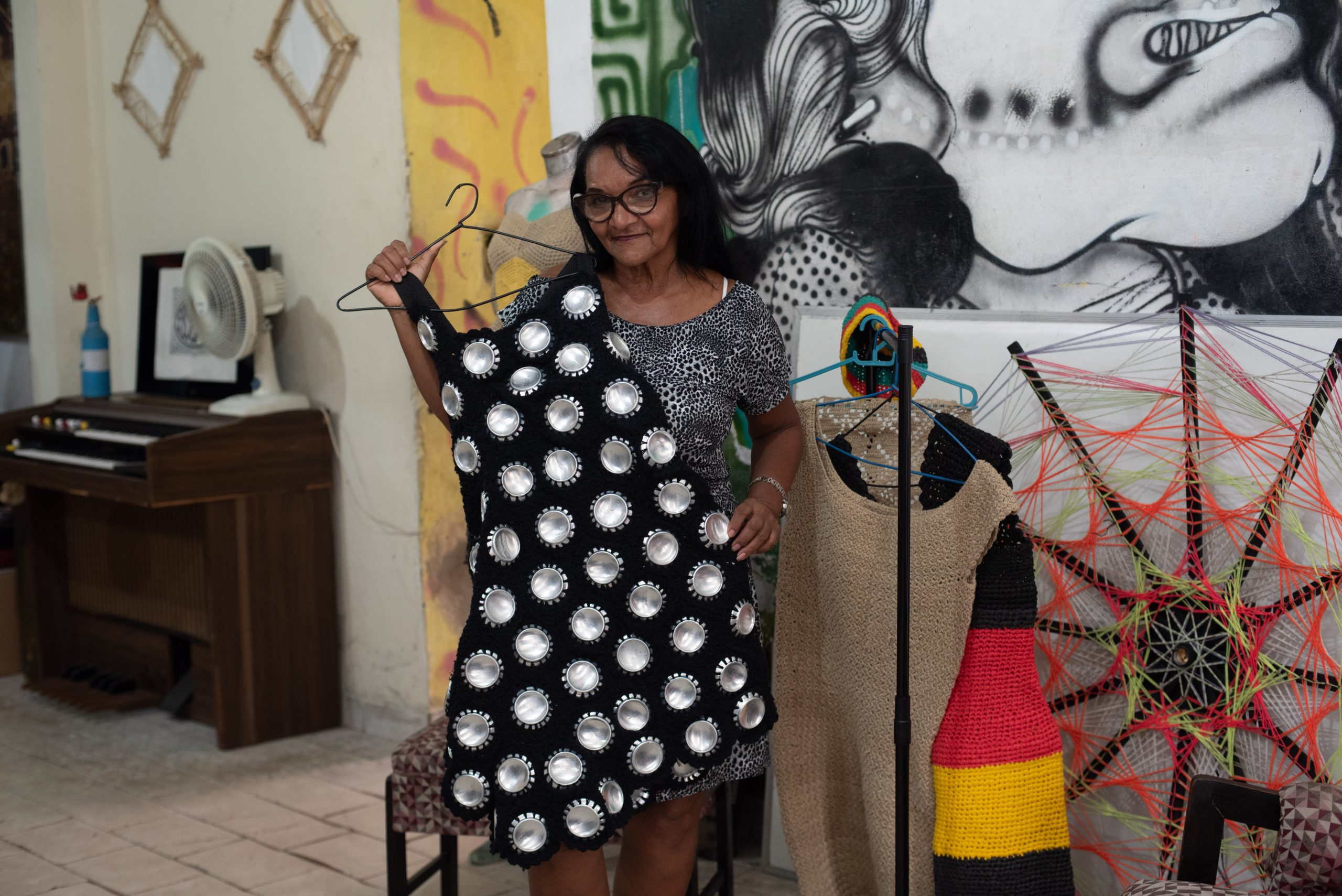
In thinking about the future, Dona Nete says she believes in the transformative potential her work can have.
“There’s so much you can do to change things, you know? Our life here on Earth—our living—gets extended. Nature is so grateful… I’d love to teach, especially in the favelas. Because, generally speaking, people in favelas have limited means of survival. By teaching a favela community, we’ll greatly reduce waste. People will learn what it means to save. People will learn and reeducate themselves. I’d really love for my project to reach these communities, to help reeducate both children and adults. To help people learn to take better care of nature, you know? To take care of what we depend on so much—like water and the natural world. And to put an end to so much sadness, so much tragedy [caused by waste overproduction], because nowadays, even a little bit of rain makes rivers overflow.” — Dona Nete
About the author: Bárbara Dias was born and raised in Bangu, in Rio’s West Zone. She has a degree in Biological Sciences, a master’s in Environmental Education, and has been a public school teacher since 2006. She is a photojournalist and also works with documentary photography. She is a popular communicator for Núcleo Piratininga de Comunicação (NPC) and co-founder of Coletivo Fotoguerrilha.
